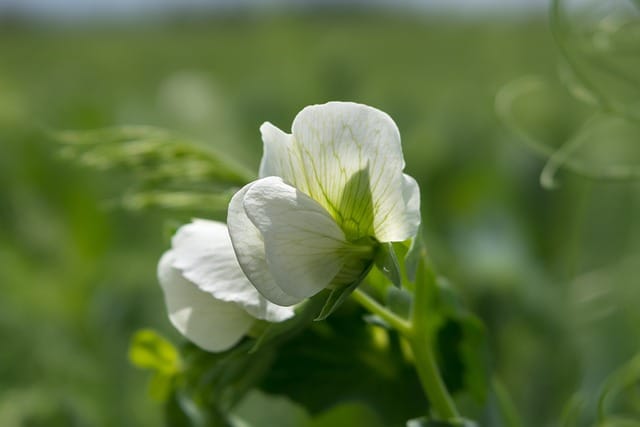Fighting gardening diseases: Pea blight
Gardening diseases can cause significant damage to plants, resulting in reduced yield and poor overall plant health

In this article:
- Introduction
- Understanding Pea Blight
- Identifying Pea Blight Symptoms
- Causes and Contributing Factors
- Prevention and Proactive Measures
- Cultural Control Methods
- Chemical Control Options
- Organic Alternatives
- Integrated Pest Management Techniques
- Crop Rotation and Companion Planting
- Early Detection and Rapid Response
- The Importance of Good Garden Hygiene
- Dealing with Pea Blight Outbreaks
- Conclusion and Future Considerations
Introduction
Gardening diseases can cause significant damage to plants, resulting in reduced yield and poor overall plant health. One such disease is pea blight, which affects pea plants. In this article, we will explore how to understand, identify, and control pea blight to ensure a successful pea harvest.
Understanding Pea Blight
Pea blight, also known as Ascochyta blight, is a fungal disease that affects peas. The fungus responsible for pea blight spreads through spores and can survive in the soil for several years. It typically infects the leaves and pods of pea plants, leading to blemishes, discoloration, and eventually, plant death.
Identifying Pea Blight Symptoms
Early identification of pea blight symptoms is crucial to prevent the disease from spreading further. Look out for brownish spots on the leaves, stems, and pods, which may later turn dark and develop a characteristic concentric ring pattern. Infected leaves may also show signs of yellowing, wilting, and eventually dropping off.
Causes and Contributing Factors
Several factors can contribute to the development of pea blight, including favorable weather conditions such as high humidity, excessive moisture, and extended periods of leaf wetness. Plant stress, overcrowding, and poor air circulation can also create an environment conducive to pea blight.
Prevention and Proactive Measures
Preventing pea blight is essential for maintaining a healthy pea crop. Start by selecting disease-resistant pea varieties and planting them in well-drained soil with good air circulation. Avoid overhead watering and water the plants at ground level. Regularly inspect your plants for symptoms and promptly remove any infected plant material to prevent further spread.
Cultural Control Methods
Implement cultural control methods to minimize the risk of pea blight. These include practicing crop rotation, which involves not planting peas or other related plants in the same area for at least two years. Additionally, ensure proper plant spacing and remove weeds, as they can harbor the disease.
Chemical Control Options
If cultural control methods are not sufficient, chemical control options can be considered. Fungicides labeled for pea blight can be used following the instructions provided. It is important to read the labels carefully and apply the fungicide at the recommended intervals.
Organic Alternatives
If you prefer organic alternatives, several options are available for managing pea blight. These include using copper-based fungicides, neem oil, or organic sulfur-based products. Ensure you follow the recommended application rates and timings for the best results.
Integrated Pest Management Techniques
Integrated Pest Management (IPM) techniques combine various strategies to control pests and diseases, including pea blight. IPM includes cultural controls, biological controls (such as beneficial insects), and judicious use of chemical controls. Implementing an IPM approach helps to minimize the reliance on chemicals and promotes overall plant health.
Crop Rotation and Companion Planting
Crop rotation and companion planting strategies can be effective in preventing and managing pea blight. Rotate peas with unrelated plant species to reduce the buildup of the pathogen in the soil. Companion planting certain plants, such as garlic or marigolds, can also deter pests and diseases.
Early Detection and Rapid Response
Early detection of pea blight is essential for successful disease management. Regularly inspect your plants for symptoms and take immediate action if any signs of infection are present. Promptly remove and dispose of infected plant material to prevent the disease from spreading further.
The Importance of Good Garden Hygiene
Maintaining good garden hygiene is crucial to prevent the spread of pea blight. Clean and sanitize garden tools, stakes, and other equipment regularly. Avoid working in the garden when the plants are wet to minimize the risk of spreading fungal spores.
Dealing with Pea Blight Outbreaks
In the event of a pea blight outbreak, act swiftly to manage the disease. Combine multiple control methods, including cultural controls, chemical or organic controls, and IPM techniques. Consider removing severely infected plants and disposing of them away from your garden to prevent recontamination.
Conclusion and Future Considerations
Pea blight can pose a significant threat to your pea crop, but with proper prevention, early detection, and appropriate control measures, it can be effectively managed. Stay vigilant, practice good garden hygiene, and consider incorporating organic and IPM techniques for long-term disease management and healthier plants.
